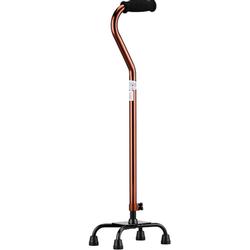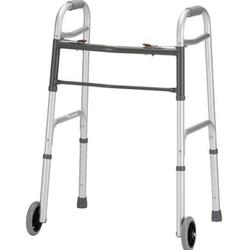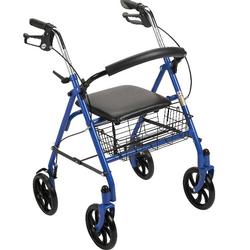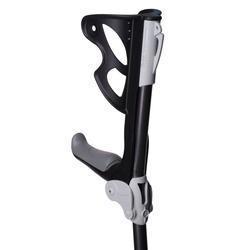How to Choose a Walking Aid
There are several reasons you or a loved one may need a little (or a lot) of assistance walking. The type of walking aid you choose depends on how much assistance you need.
Are you just a little unsteady on uneven surfaces? Or would you like support for extended walking? Here are some typical real-life situations, and the products that are recommended to help deal with those issues.
Canes
Lots of people become unsteady on their feet, or suffer from problems with their balance due to either medical issues or the side effects of medications. Perhaps a painful joint makes weight bearing and walking difficult. If this sounds familiar then a cane might be a great first step to safer mobility.
Straight, single point canes can provide just enough assistance to ease your unsteadiness, they are lightweight and inexpensive. For a bit more support, consider a Quad (four prong) cane. The wider base feels less “wobbly” and will stand up on its own when you are not walking, which is handy.
Walkers
For more support, provided equally on both sides, a walker will be the most helpful to you. The feeling of security that comes from having a grip on the walker with both hands is important when keeping your balance and avoiding falls. The most basic and least expensive is the standard folding walker, with or without wheels on the front. They will have either rubber tips on the back or can be fitted with “glide caps” so you can push it along in front of you. They fold flat, are very lightweight, and accessories like walker trays, baskets and tote bags are available to carry personal items.
Rollators
If you need the stability of a walker, combined with a need to be able to sit down and take a rest periodically, choose a rolling walker or rollator. There are lots of advantages, since rollators have seats on them so you can sit down and rest if you need to, four wheels with locking brakes, and most are designed with baskets or pouches built right in. Rollators are made in lots of sizes and colors, so you are sure to find one perfect for your individual needs.
Crutches
If you need to be non-weight bearing on one side, then crutches are the best solution. Standard crutches are typically height adjustable, lightweight and inexpensive, but most appropriate for short term use. For longer term use, the Millennnial crutch is ergonomically designed to reduce carpal tunnel problems, and has a spring assist system to help absorb impact. For the most support, forearm crutches allow you to bear weight on your hands, but also extend up the forearm for additional steadiness and to help distribute your weight. They also incorporate ergonomic design to help prevent damage to the wrists and hands over time.
SpinLife Knows: If you are using a cane to help you with balance, hold the cane in your dominant hand. Your dominant hand is stronger and will feel more natural to use. If you are using a cane to take weight off a painful joint, hold the cane in the hand opposite that side, and the cane steps forward as the problem leg does. That way you are taking part of your weight on your leg, part on your hand. Our Product Experts are here to help you make the best choice for your individual situation. Give us a call at 1-800-850-0335.
SpinLife Knows: there are three points of adjustment on crutches and it’s important to get it right to avoid hurting yourself. First, the height of the crutch should be set so that the crutches form a “Tripod” effect with your body. Not so short that they are straight down by your sides, nor so long that they angle out awkwardly. Use 12 inches out from your feet as a guideline. Second, the height of the hand grip should be set approximately “watchband” height with your hands straight down by your sides. This insures a bend to your elbow which is what you want as you are walking forward. Last, the underarm pad should NOT be right up under your armpit. Set the arm pad height an inch or two below the underarm. You are not bearing your weight on your underarm, the crutch is just “tucked” under the arm for stability. Our Product Experts are here to help you make the best choice for your individual situation. Give us a call at 1-800-850-0335.



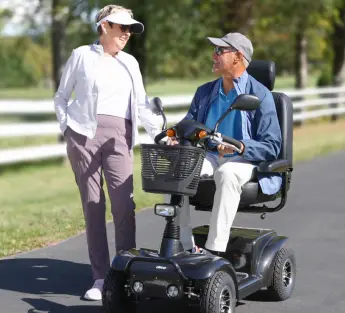

 Contact Us
Contact Us
 M-F 9am - 6pm ET
M-F 9am - 6pm ET
 Request parts
Request parts Request Service
Request Service

